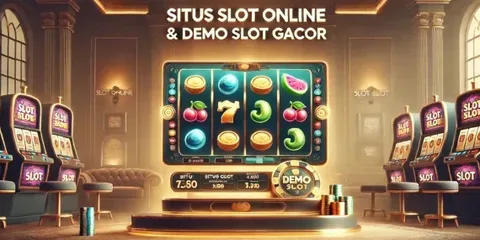Slot machines have come a long way since their invention in the late 19th century. What began as a simple mechanical device with spinning reels and a lever has transformed into a high-tech gaming experience. In this article, we’ll explore the evolution of slot technology: from reels to VR casinos, tracing the key milestones that have reshaped the industry.
The Mechanical Era: Birth of the Classic Slot
The first slot machine, the Liberty Bell, was invented by Charles Fey in 1895. It featured three spinning reels and five symbols — a design that would dominate for decades. Players would pull a lever to spin the reels, hoping for a winning combination.
These early machines were completely mechanical, relying on gears and springs. Though simple by today’s standards, they marked the beginning of a global gambling revolution.
The Digital Revolution: Video Slots Take Over
The 1970s introduced a major leap in slot technology with the emergence of video slots. These machines used screens instead of physical reels, allowing for more creative game design, animations, and bonus features. Random Number Generators (RNGs) replaced mechanical components, ensuring fairness and unpredictability.
By the 1990s, video slots had overtaken traditional machines in popularity, especially in casinos across Las Vegas and Atlantic City. This shift was a crucial step in the evolution of slot technology: from reels to VR casinos.
Online Slot Games: The Internet Age
With the rise of the internet in the early 2000s, slot games moved online. This allowed players to enjoy their favorite games from home, opening up new possibilities for game variety, themes, and progressive jackpots.
Online platforms introduced mobile compatibility, 3D graphics, and social gaming features, expanding the player base and transforming slot gaming into a more immersive and personalized experience.
Entering the Future: VR and Augmented Reality Casinos
Today, we stand at the brink of the next major shift — the evolution of slot technology: from reels to VR casinos. Virtual Reality (VR) and Augmented Reality (AR) are pushing the boundaries of player interaction. With VR headsets, users can walk through digital casinos, interact with machines, and experience gameplay in a fully immersive environment.
These technologies promise not only enhanced realism but also social features, allowing players to chat, compete, and enjoy the ambiance of a real casino — all from their living room.
Challenges and Opportunities Ahead
While the possibilities of VR slots are exciting, challenges remain, including high development costs, limited access to VR equipment, and ensuring security in virtual environments. However, as technology becomes more accessible, these hurdles are likely to diminish.
Developers and casinos continue to innovate, ensuring that the evolution of slot technology: from reels to VR casinos remains an exciting journey for both industry insiders and gaming enthusiasts.
Conclusion
From simple mechanical machines to immersive virtual casinos, slot technology has evolved dramatically over the last century. As we move deeper into the digital age, the integration of VR and AR promises to redefine what players expect from their gaming experience. The evolution of slot technology: from reels to VR casinos is not just a story of innovation, but a testament to how technology can revolutionize entertainment in ways previously unimaginable.


